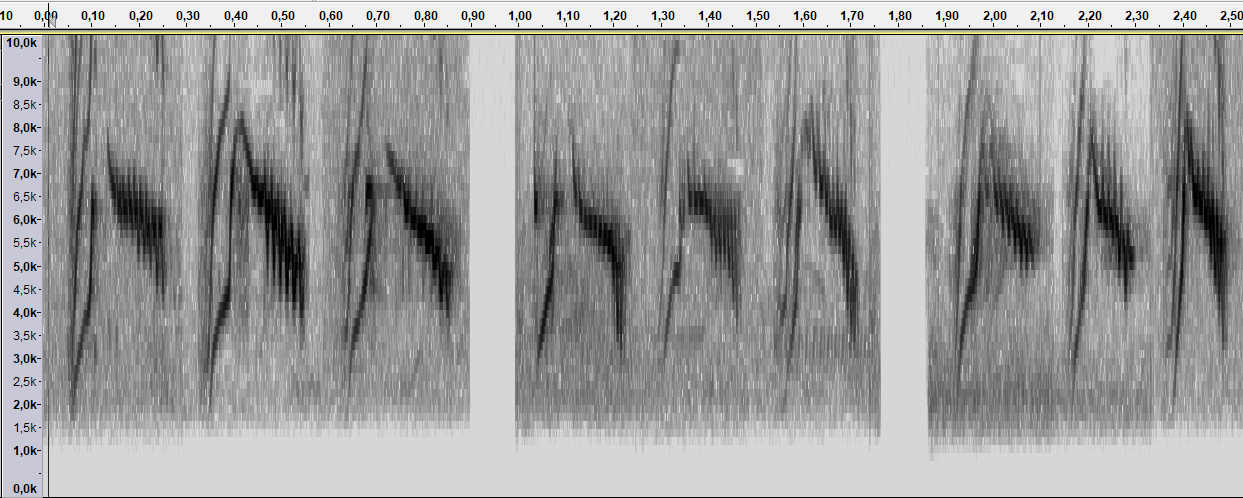Balkankwikstaart
Motacilla feldegg · Black-headed Wagtail
 Balkankwikstaart ·
Motacilla feldegg
·
14-05-2020 · Maarten Wielstra
Balkankwikstaart ·
Motacilla feldegg
·
14-05-2020 · Maarten Wielstra
| Datum | 14 mei 2020 |
|---|---|
| Locatie | world |
| Fotograaf |
|
| Bekeken | 3520 × |
This upload is meant to show that eastern range Black-Headed Wagtails can be similar to Eastern Yellow Wagtails by call. Stanislas Wroza and I independantly noticed this similarity. He was also the person telling me that eastern feldegg seems to show a difference in the first, uprising part of the sonogram, compared to birds in the west of the range. He learned me that the two ''sticks'' are stretched out less horizontally in eastern birds, making them also look different compared to the blue-headed (and white-throated) taxa breeding around Spain and Italy. In the attached sonogram, I compiled 3x feldegg, 3x macronyx, 3x plexa (first two plexa just outside range, so hybrids not excluded). I sorted these calls out to show some of the variation within each taxon. I chose 2 out of 4 Eastern Yellow taxa because of the obvious ''hook'' which is sometimes present in the down left part of the sonogram in these particular taxa. This hook can be associated with the 3 taxa from the southern part of Europe, but as shown here, they can also occur within Eastern Yellow Wagtail. The more stretched out these sticks are horizontally, the more the call seems to sound like a typical Mediterranean bird instead of ''Citrine-like'', with a more exploding sound at the very start of the call (as if the beak is impulsively pressed open by an outburst of air). I think Eastern birds within feldegg sound less like this, as the space between the two sticks is more narrow and the hook is less pronounced. To distinguish feldegg from Eastern Yellow based on calls like the ones compiled here, one should combine several features of the sonogram. Statistical investigation is needed and will probably take a lot of work, as Independent features will show some overlap. This would take quite some work, but would be a nice addition to the complex puzzle of wagtail identification. On first glance I would say that eastern feldegg more often shows more space in between two sticks, with a more obvious hook on the bottom of the right stick (when looking at the first, uprising part of the sonogram). More often than in these E.Y.W., these feldegg birds seem to wait some longer to acually start to modulate. The total time length of the call is often longer than in above mentioned E.Y.W. taxa, I think. I noticed that the different E.Y.W. taxa show differences in modulation speed, plexa having the slowest (if looking at the full length of the modulated part of the longer calls). Feldegg also modulates comparably slow. Macronyx however, seems to modulate just a little bit faster. I don't have all the answers (yet), but I believe the truth is out there. I hope to inspire more people to take a better look at Mediterranean wagtail calls and perhaps to even start some research themselves. Iberian and Italian birds can also be identified on subspecific level by call in my opinion (but don't you start about hybrids!). Meanwhile, Citrine and Eastern Yellow taxa are seriously being investigated, but in a very slow pace ;). |
Discussie
Maarten Wielstra
·
10 maart 2021 06:06, gewijzigd 10 maart 2021 06:08
Call ID Southern European races
Gebruikers van het forum gaan akkoord met de forumregels.
